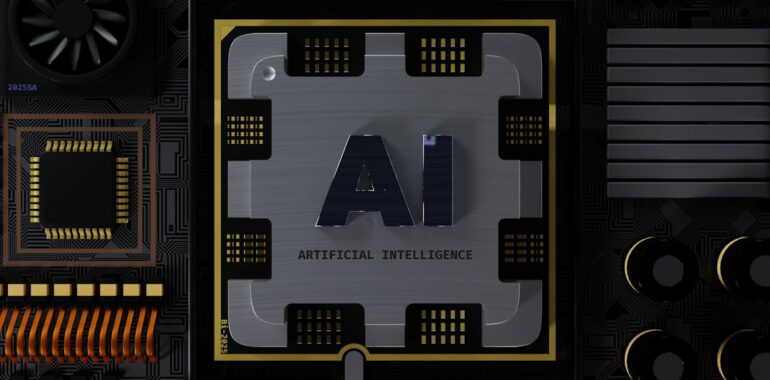Top 5 Multi-Agent AI Platforms to Watch in 2025

Meta Description: Explore the top 5 multi-agent AI platforms in 2025, highlighting the best tools for automating tasks and enhancing collaboration in your business.
Introduction
Artificial Intelligence (AI) continues to revolutionize the way businesses operate, driving efficiency and innovation across various sectors. Among the most promising advancements are multi-agent AI platforms, which enable multiple AI agents to collaborate, automate tasks, and generate high-quality synthetic data. As we approach 2025, several platforms are emerging as leaders in this space, offering robust solutions tailored to diverse business needs. In this article, we delve into the top 5 multi-agent AI platforms to watch in 2025, showcasing the best tools for automating tasks and enhancing collaboration in your business.
1. CrewAI
Overview
CrewAI is an open-source platform renowned for its emphasis on multi-agent collaboration. It adopts a code-based approach, allowing users to define specific roles for each agent, thereby creating a cohesive environment for orchestrating complex tasks.
Key Features
- Role-Based Architecture: Define specialized roles with distinct goals and knowledge bases.
- Shared Memory System: Enables agents to store and retrieve data from a common repository.
- Advanced Tool Support: Integrate third-party APIs seamlessly.
- Error Handling: Implements automatic guardrails to prevent task misfires.
Pros & Cons
Pros:
– Ideal for multi-step tasks.
– Fosters synergy among agents.
– Highly flexible and customizable.
Cons:
– Requires technical expertise.
– Lacks advanced security features by default.
Use Cases
- Project Management: Distribute tasks among specialized agents.
- Financial Analysis: Conduct risk assessments and data cleaning.
- SEO Content Creation: Handle research, drafting, and editing processes.
Best For
Small to medium development teams seeking a versatile, open-source multi-agent system supported by a vibrant community.
2. AutoGen
Overview
Backed by Microsoft, AutoGen is an enterprise-grade, open-source solution designed for large-scale tasks. It leverages advanced language models to manage multi-agent workflows efficiently.
Key Features
- Deep LLM Integration: Supports models like GPT-4, GPT-3.5, Claude, and PaLM.
- Human Oversight: Allows partial or final manual checks for sensitive tasks.
- Code Generation: Enables agents to produce, test, and refine code autonomously.
Pros & Cons
Pros:
– Suited for enterprise environments.
– Offers advanced debugging capabilities.
– Efficient with GPT-4 integrations.
Cons:
– Resource-intensive and potentially costly.
– May face scalability challenges with high concurrency.
Use Cases
- Software Development: Automate code writing and improvement.
- Data Analytics: Streamline data ingestion, cleaning, and summarization.
- Customer Support: Develop and refine knowledge base entries.
Best For
Enterprises seeking robust multi-agent solutions with advanced language model integrations and the capacity to handle extensive workflows.
3. LangChain
Overview
LangChain is an open-source library celebrated for its modular approach, allowing developers to chain various components for sophisticated AI tasks. While not exclusively an agent platform, it excels in building custom agents and orchestrating complex workflows.
Key Features
- Chains: Combine prompt templates, memory modules, and logical components.
- Open Ecosystem: Access a plethora of community-built extensions.
- Memory Integration: Incorporate short-term and long-term memory for agents.
Pros & Cons
Pros:
– Extremely flexible and developer-friendly.
– Supported by a fast-growing community.
Cons:
– Features can be unstable due to continuous updates.
– Not certified for enterprise use.
Use Cases
- Document Processing: Summarization, Q&A, and data extraction.
- Writing Pipelines: Manage research, drafting, and editing stages.
- Data Classification: Automate data transformation and categorization.
Best For
Startups and development teams that prefer building custom workflows and are comfortable with dynamic, open-source environments.
4. Vertex AI Agent Builder
Overview
Vertex AI Agent Builder, a Google Cloud offering, provides a no-code solution for creating large language model-driven agents. Its user-friendly interface is ideal for users seeking quick prototyping with minimal coding.
Key Features
- Drag-and-Drop Interface: Simplifies agent creation without the need for extensive coding.
- Prebuilt Modules: Includes modules for search, chat, and data retrieval.
- Built-In Compliance: Supports HIPAA and finance-related compliance standards.
- Seamless Integration: Connects effortlessly with Google Cloud services like BigQuery and Dataflow.
Pros & Cons
Pros:
– Easy setup and user-friendly.
– Enterprise-ready with advanced data features.
Cons:
– Can become expensive with high usage.
– Limited advanced customization options.
Use Cases
- Customer Service Chatbots: Utilize corporate documentation to assist users.
- Workflow Automation: Automate repetitive tasks such as data tagging.
- Healthcare Data Processing: Manage sensitive healthcare or financial data securely.
Best For
Large organizations or teams within the Google Cloud ecosystem seeking a straightforward, no-code platform for building AI agents.
5. Cogniflow
Overview
Cogniflow is a no-code AI platform designed for rapid AI flow creation. While it may lack advanced multi-agent capabilities, it excels in facilitating automations that typically require development resources.
Key Features
- No-Code Environment: Accessible to users without programming skills.
- Data Variety Support: Handles text, images, and audio data.
- Pretrained Model Marketplace: Offers a selection of pretrained models for sentiment analysis, classification, and more.
Pros & Cons
Pros:
– Quick and intuitive setup.
– User-friendly interface with a free testing plan.
Cons:
– Limited handling of highly specialized tasks.
– May not scale effectively for large-scale operations.
Use Cases
- eCommerce Chatbots: Implement simple classification or chatbot functionalities.
- Document Scanning: Automate email and document processing for small offices.
- Startup Automations: Enable AI-driven tasks without extensive development resources.
Best For
Beginners and small businesses seeking standard AI automation tasks with minimal coding requirements.
Conclusion
The evolution of multi-agent AI platforms signifies a transformative shift in AI application, moving beyond single-model solutions to more dynamic, collaborative systems. These platforms enable businesses to automate complex workflows, generate high-quality synthetic data, and enhance overall productivity by leveraging specialized AI agents. As illustrated by the top 5 platforms discussed, each offers unique strengths tailored to different organizational needs and technical capabilities.
When selecting the best AI automation tools for your business, consider factors such as your team’s technical expertise, project scale, integration requirements, and budget. Whether you opt for the flexible, open-source CrewAI, the enterprise-focused AutoGen, the modular LangChain, the user-friendly Vertex AI Agent Builder, or the accessible Cogniflow, embracing a multi-agent approach can unlock new levels of efficiency and innovation.
Ready to revolutionize your business with cutting-edge AI solutions? Visit CAMEL-AI today and explore how our comprehensive multi-agent platform can elevate your automation and collaboration strategies.




